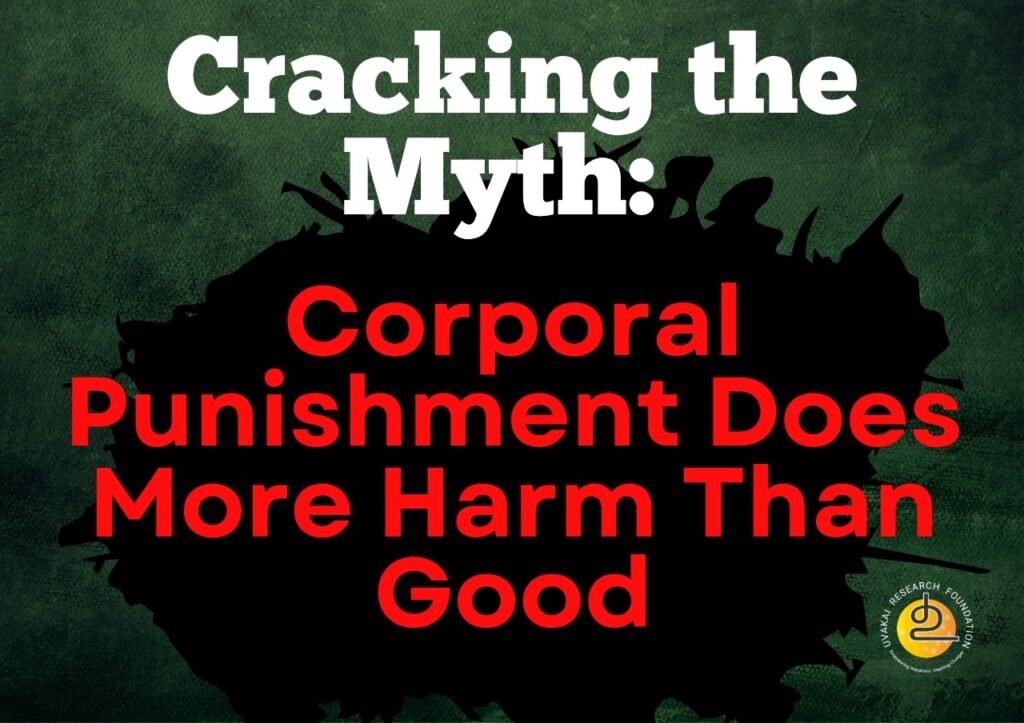
Corporal punishment, defined as the use of physical force intended to cause pain but not injury, has long been used by teachers and parents as a disciplinary measure. However, a growing body of research reveals that this approach not only fails to achieve its intended goals but also causes significant harm to children’s mental health, academic outcomes, and overall development.
The Evidence Against Corporal Punishment
- No Academic Benefits Contrary to the belief that physical discipline promotes learning, studies confirm the opposite. Corporal punishment creates an environment of fear that hinders cognitive functioning and academic performance. Research by Maiti (2021) in Indian schools found no evidence supporting corporal punishment as a motivational tool, instead highlighting its detrimental impact on student performance.
- Harmful Psychological Effects Physical punishment has profound negative impacts on children’s mental health. Studies indicate a strong correlation between corporal punishment and increased levels of anxiety, depression, and emotional distress (Turner & Finkelhor, 1996). In India, research by Nijhara et al. (2018) shows that such punishment contributes to poor emotional regulation and childhood mental health issues, fostering a cycle of violence normalization.
- Long-term Behavioral Consequences Corporal punishment does not instill discipline but exacerbates aggression, externalizing behaviors, and delinquency, which can persist into adulthood (Hecker et al., 2014; Gershoff, 2002). Children learn that violence is an acceptable way to resolve conflicts, potentially shaping their attitudes toward violence in adulthood.
- Correlation with Family Tensions Socio-economic and familial stressors amplify the adverse effects of corporal punishment. Research conducted in Puducherry revealed that children from tense family environments, particularly boys and those attending public schools, are disproportionately affected. The punishment compounds their anxiety and depression (Deb et al., 2017).
- Teacher Misconceptions Many teachers view corporal punishment as a necessary disciplinary tool, despite its ban in numerous countries, including India. A study by Cheruvalath and Tripathi (2015) highlights a lack of awareness among teachers about its psychological harm, emphasizing the need for training in non-violent classroom management techniques.
- Cultural Context and Alternatives While corporal punishment remains culturally entrenched in many societies, evidence suggests that alternative disciplinary methods—such as positive reinforcement and constructive communication—yield better developmental outcomes (Jaffee et al., 2004). Such approaches promote healthier parent-child and teacher-student relationships, fostering an environment conducive to learning and emotional growth.
The Call for Change
Research unequivocally debunks the myth that corporal punishment is an effective tool for discipline or learning. Its use perpetuates cycles of violence, undermines children’s mental health, and impairs their academic potential. Instead, adopting non-violent, evidence-based strategies can foster discipline and learning while preserving children’s dignity and well-being.
References
- Cheruvalath, R., & Tripathi, M. (2015). Perceptions of teachers on the ban of corporal punishment in India. Educational Research for Policy and Practice, 14(1), 17-28. https://doi.org/10.1007/s10671-014-9170-2
- Deb, S., Strodl, E., & Sun, J. (2017). Academic stress, parental pressure, anxiety, and mental health among Indian high school students. International Journal of Psychology and Behavioral Sciences, 7(1), 18-31. https://doi.org/10.5923/j.ijpbs.20170701.03
- Gershoff, E. T. (2002). Corporal punishment by parents and associated child behaviors and experiences: A meta-analytic and theoretical review. Psychological Bulletin, 128(4), 539–579. https://doi.org/10.1037/0033-2909.128.4.539
- Hecker, T., Hermenau, K., Isele, D., & Elbert, T. (2014). Corporal punishment and children’s externalizing problems: A cross-cultural perspective. Child Abuse & Neglect, 38(3), 527–537. https://doi.org/10.1016/j.chiabu.2013.08.007
- Jaffee, S. R., Caspi, A., Moffitt, T. E., & Taylor, A. (2004). Physical maltreatment victim to antisocial behavior: Evidence of an environmentally mediated process. Journal of Abnormal Psychology, 113(1), 44–55. https://doi.org/10.1037/0021-843X.113.1.44
- Maiti, S. (2021). The impact of corporal punishment on student performance: Evidence from Indian schools. Educational Studies, 47(3), 381–397. https://doi.org/10.1080/03055698.2020.1834356
- Nijhara, S., Mehra, K., & Gulati, S. (2018). Corporal punishment: Impact on mental health and attitudes toward violence in Indian children. Indian Journal of Mental Health, 5(2), 150–158.
- Turner, H. A., & Finkelhor, D. (1996). Corporal punishment as a stressor among youth. Journal of Marriage and Family, 58(1), 155–166. https://doi.org/10.2307/353382
